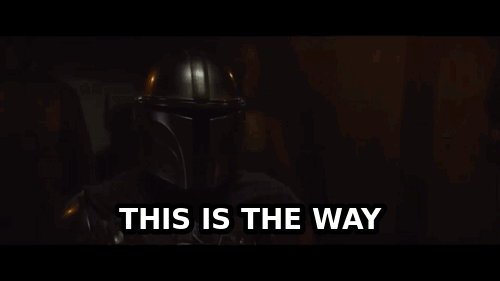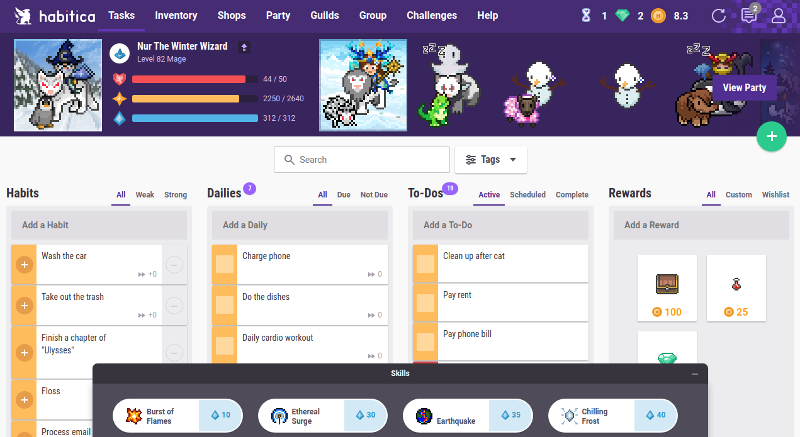
If Malcolm Gladwell could see my Steam account, he’d agree that out of the handful of games I’ve sunk some time into, Terraria is by far the game I’m closest to mastering. (just for the record, I’m nowhere close to my 10,000 hours, but I am over 1K including all that AFK item farming…) Terraria is a 2D open world mining fantasy game. It’s not super difficult to survive, but it literally starts you out on a sunny day in the woods with a couple of tools and a twinkle in your eye.


Before too long you’ve wandered into more hostile biomes and realized that zombies roam the world after dark. Once you’ve sorted out how to survive the first night (or died and respawned many times… it happens to the best of us) you’re off on an escalating series of stat, equipment and world improvements to become powerful enough to unlock the secrets of your world. I’m lucky to have played all of my Terraria hours with my wife during early stages of our relationship, so I can’t say enough good things about the quality cooperative play in the game. But I’m not here to sell you on Terraria, but to share some life lessons that I’ve picked up while mining my way towards Journey’s End.
Mastering Your World
After your first few moments of bewilderment in the game, Terraria naturally guides you to stake your claim over the world. There will always be natural forces at play, but just about every phenomena can be controlled with time and some good old-fashioned grunt work.

If you’re constantly trekking from one part of the map to another and are feeling frustrated with the myriad obstacles along the way, change them! Even a novice player can make rudimentary upgrades which massively improve your day. Once you’re feeling a little craftier, infrastructure projects like Terraria’s ubiquitous sky bridges take your experience to a whole new level. Later, you can defy physics further by building teleporters to your frequent destinations.
I think the biggest lesson here is that if you’re willing to invest the time and energy to increase your quality of life in a 2D block world, you should probably take a moment to revisit obstacles you encounter in the real world.
Life doesn’t afford us the luxury of impossibly floating roads or instantaneous teleportation, but the reminder that you can edit your world is a powerful one. Maybe you can’t strip mine the metaphorical mountain in your way, but you can probably do something about the bits you metaphorically bump into everyday.
Start small! What little environmental changes would make your life a little better? Some fixes are utilitarian: Would that second charger in the other room reduce a little frustration? How about reorganizing your pantry so you it’s a little easier to access your healthier snacks? Some fixes are more aesthetic: would decluttering the room you’ve been trapped in for most of your waking pandemic hours help you feel a little less crazy? Would a rug really tie that room together? Once you’ve exhausted the quick fixes, maybe think of some sky bridge solutions: life improvements that defy the physics of our conventional thinking.
Playing a Wiki
Open world games are great, but then you start doing research to figure out how to progress and end up playing a wiki, which in turn becomes playing a to do list… Much like life, Terraria is open enough that you’ll constantly find yourself saying “now what?” You can usually find new things to do if you wander enough, but there are very specific milestones to advance through the game and in my experience, they’re easy enough to miss.
Terraria starts in a virtual childhood, Pre-Hardmode, where you get to know your world and face your first few bosses. If you don’t know what’s coming, you might just face off against the Wall of Flesh, a milestone boss that catapults you and your world into Hardmode, a virtual adulthood where the world gets scarier, everything gets harder and there is urgency to save your world from the creeping powers of light and dark. Sorry for the spoiler, but it’s best to be prepared for Hardmode and even then it’s going to knock you on your ass a bunch of times.

So Terraria, much like life, is much easier with a guide and in this case the best guide is the wiki. While my wife builds magnificent strongholds for our NPCs and chests full of loot, I’m often clicking around the wiki trying to figure out what we should do next and slipping it into our Terraria to do list. It’s not always a lot of fun, and it can make the game feel a little more clinical than the whimsical adventure it aims to provide, but in my case it is a necessary evil to keep moving forward.

Which brings us back to IRL progression. Sometimes to figure out what you need to do next, you’ve got to find the wiki for life and look up a guide page. Sometimes that’s a book, sometimes that’s a person. Sometimes you truly can progress by wandering even though that can be a risky strategy. There are plenty of options, but it’s important to remember that they’re there if you get stuck or bored.

I’m not going to recommend anything in particular because YMMV and I don’t think any one path Is The Way. Maybe try taking a snippet from multiple sources and Frankensteining your own path. Also, remember to use the wisdom of others to guide your path, but recall that life is more dynamic than a videogame, so someone who entered the Hardmode of adulthood generations prior was playing an earlier version, so to speak, and they had very different meta guiding them.

Terraria is great, and while it’s a contender for my most hours sunk into gaming, it’s important to remember that those hours weren’t sunk. Instead, I look at that time as successful leisure and relationship building, with the nifty side effect of reminding me to take control of my own open world adventures and to use the documentation resources at my disposal, because let’s face it: life doesn’t always narrow down the path to your next level.

















